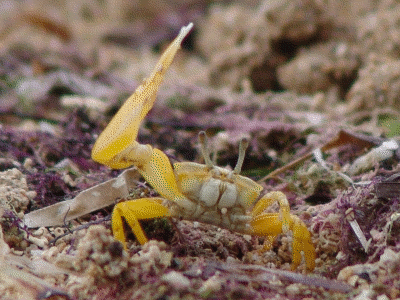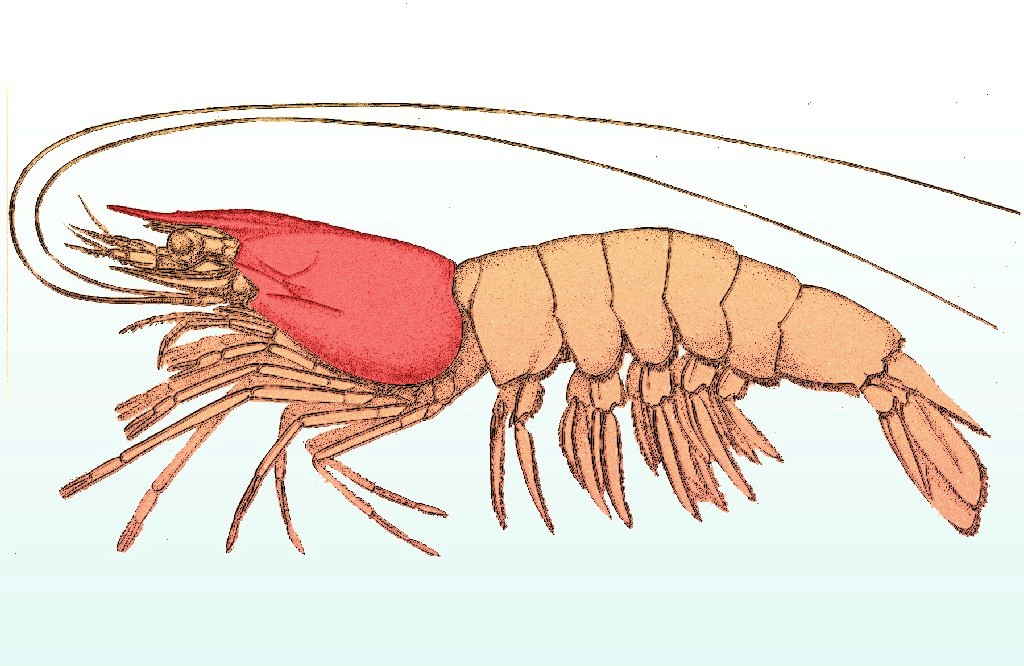|
Leptuca Batuenta
''Leptuca batuenta'', commonly known as the beating fiddler crab, is a species of fiddler crab native to the tropical eastern Pacific, from El Salvador to northern Peru. Taxonomy Previously a member of the genus ''Uca'', the species was transferred in 2016 to the genus ''Leptuca'' when ''Leptuca'' was promoted from subgenus to genus level. Description This crab is very small; carapace A carapace is a Dorsum (biology), dorsal (upper) section of the exoskeleton or shell in a number of animal groups, including arthropods, such as crustaceans and arachnids, as well as vertebrates, such as turtles and tortoises. In turtles and tor ... width is approximately in adult males and in adult females. Both sexes have a pale brown to yellow carapace with some white marbling. Individuals may have green eyestalks. Habitat The species can be found on open mudflats and among unshaded mangrove roots. It prefers mud substrate. References {{Taxonbar, from=Q107086585, from2=Q14510137 Oc ... [...More Info...] [...Related Items...] OR: [Wikipedia] [Google] [Baidu] |
Jocelyn Crane
Jocelyn Crane (June 11, 1909 – December 16, 1998), aka Jocelyn Crane-Griffin, was an American carcinologist, most famous for her research on the fiddler crab and her work with the New York Zoological Society’s (now the Wildlife Conservation Society) Department of Tropical Research. She became a key figure and expert in ethology – concentrating on the behavior of tropical animals, jumping spiders, praying mantises, butterflies and most importantly, fiddler crabs. Her lifelong research on fiddler crabs—researching their morphology, systematics, biogeography and behavior—was published in her 1975 seminal work ''Fiddler Crabs of the World''. Biography Crane was born in St. Louis, Missouri. She was educated at Smith College in Northampton, Massachusetts, graduating with a zoology degree in 1930. Career In 1930, she went straight from university to become a laboratory assistant on William Beebe’s staff for the Second Bermuda Oceanographic Expedition at the New York Zoologi ... [...More Info...] [...Related Items...] OR: [Wikipedia] [Google] [Baidu] |
Fiddler Crab
The fiddler crab or calling crab may be any of more than one hundred species of semiterrestrial marine crabs in the family Ocypodidae, well known for their sexually dimorphic claws; the males' major claw is much larger than the minor claw, while the females' claws are both the same size. A smaller number of ghost crab and mangrove crab species are also found in the family Ocypodidae. This entire group is composed of small crabs, the largest being slightly over two inches (5 cm) across. Fiddler crabs are found along sea beaches and brackish intertidal mud flats, lagoons, swamps, and various other types of brackish or salt-water wetlands. Like all crabs, fiddler crabs shed their shells as they grow. If they have lost legs or claws during their present growth cycle, a new one will be present when they molt. If the large fiddle claw is lost, males will develop one on the same side after their next molt. Newly molted crabs are very vulnerable because of their soft shells. They a ... [...More Info...] [...Related Items...] OR: [Wikipedia] [Google] [Baidu] |
El Salvador
El Salvador (; , meaning " The Saviour"), officially the Republic of El Salvador ( es, República de El Salvador), is a country in Central America. It is bordered on the northeast by Honduras, on the northwest by Guatemala, and on the south by the Pacific Ocean. El Salvador's capital and largest city is San Salvador. The country's population in 2022 is estimated to be 6.5 million. Among the Mesoamerican nations that historically controlled the region are the Lenca (after 600 AD), the Mayans, and then the Cuzcatlecs. Archaeological monuments also suggest an early Olmec presence around the first millennium BC. In the beginning of the 16th century, the Spanish Empire conquered the Central American territory, incorporating it into the Viceroyalty of New Spain ruled from Mexico City. However the Viceroyalty of Mexico had little to no influence in the daily affairs of the isthmus, which was colonized in 1524. In 1609, the area was declared the Captaincy General of Guatemala ... [...More Info...] [...Related Items...] OR: [Wikipedia] [Google] [Baidu] |
Peru
, image_flag = Flag of Peru.svg , image_coat = Escudo nacional del Perú.svg , other_symbol = Great Seal of the State , other_symbol_type = Seal (emblem), National seal , national_motto = "Firm and Happy for the Union" , national_anthem = "National Anthem of Peru" , march = "March of Flags" , image_map = PER orthographic.svg , map_caption = , image_map2 = , capital = Lima , coordinates = , largest_city = capital , official_languages = Peruvian Spanish, Spanish , languages_type = Co-official languages , languages = , ethnic_groups = , ethnic_groups_year = 2017 , demonym = Peruvians, Peruvian , government_type = Unitary state, Unitary Semi-presidential system, semi-presidential republic , leader_title1 = President of Peru, President ... [...More Info...] [...Related Items...] OR: [Wikipedia] [Google] [Baidu] |
Leptuca
''Leptuca'' is a genus of fiddler crabs belonging to the family Ocypodidae. The species of this genus are found on the coasts of the Americas. Description They are small- to large-sized crabs with an adult carapace width of 5–25 mm in adults. The front of their carapace is broad and they have short anterolateral margins with 0–2 posterolateral striae on the top of the carapace. Species There are currently 30 species in the genus: * ''Leptuca batuenta'' (Crane, 1941) (beating fiddler crab) * ''Leptuca beebei'' (Crane, 1941) (Beebe's fiddler crab) * '' Leptuca coloradensis'' (Rathbun, 1893) (painted fiddler crab) * ''Leptuca crenulata'' (Lockington, 1877) (Mexican fiddler crab) * '' Leptuca cumulanta'' (Crane, 1943) (heaping fiddler crab) * '' Leptuca deichmanni'' (Rathbun, 1935) (Deichmann's fiddler crab) * ''Leptuca dorotheae'' (von Hagen, 1968) (Dorothy's fiddler crab) * ''Leptuca festae'' (Nobili, 1902) (Festa's fiddler crab) * '' Leptuca helleri'' (Rathbun, 1902) (He ... [...More Info...] [...Related Items...] OR: [Wikipedia] [Google] [Baidu] |
Carapace A carapace is a dorsal (upper) section of the exoskeleton or shell in a number of animal groups, including arthropods, such as crustaceans and arachnids, as well as vertebrates, such as turtles and tortoises. In turtles and tortoises, the underside is called the plastron. Crustaceans In crustaceans, the carapace functions as a protective cover over the cephalothorax (i.e., the fused head and thorax, as distinct from the abdomen behind). Where it projects forward beyond the eyes, this projection is called a rostrum. The carapace is calcified to varying degrees in different crustaceans. Zooplankton within the phylum Crustacea also have a carapace. These include Cladocera, ostracods, and isopods, but isopods only have a developed "cephalic shield" carapace covering the head. Arachnids In arachnids, the carapace is formed by the fusion of prosomal tergites into a single plate which carries the eyes, ocularium, ozopores (a pair of openings of the scent gland of Opilione ... [...More Info...] [...Related Items...] |

